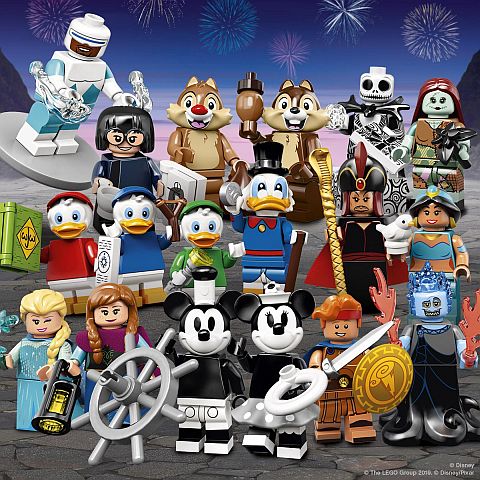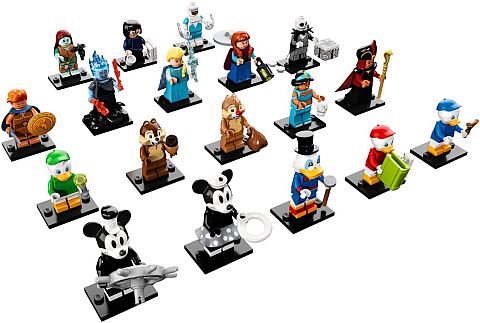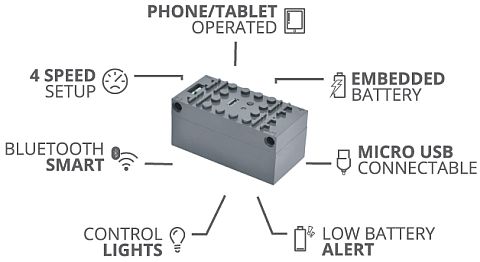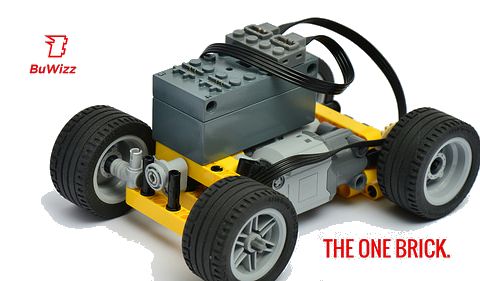As we discussed at the beginning of the month, the #71024 LEGO Collectible Minifigures Series 2 Disney characters are now available. This new collection features 18 unique minifigures; Vintage Mickey, Vintage Minnie, Hercules, Jack Skellington, Scrooge McDuck, Huey, Dewey, Louie, Chip, Dale, Jasmine, Jafar, Hades, Elsa, Anna, Sally, Edna, and Frozone! Each Disney minifigure comes in a sealed ‘mystery’ bag together with one or more accessory elements, plus a collector’s leaflet and a unique display baseplate. There is a lot to see here, so let’s take a closer look.

As usual, every collectible minifig in this series comes with one or more accessory elements, plus a collector’s leaflet and a unique display baseplate. It’s worth pointing out though that this is the third series (after The LEGO Movie 2 Collectible Minifigures, and the LEGO Unikitty Collectible Figures) where the packaging is larger than in previous series. My understanding is that this change was made to accommodate larger figures and accessories, as well as the sealed internal bags of some of the minifigures (to protect capes and other cloth elements from wrinkling).
The minifigures in this series are exceptionally well detailed. Many of them have printing on the back, the arms, and the legs, and several of them also have dual-moulded arms and legs. There are also a number of new accessories, including hats for Vintage Mickey and Minnie that only appeared in the #21317 LEGO Ideas Steamboat Willie set, a new gift box for Jack Skellington, hat and armor for Jafar, and a small bird for Jasmine.

The series includes characters from eight major themes; Vintage Disney, Chip ‘N’ Dale, Ducktales, Aladdin, Frozen, Hercules, The Incredibles, and The Nightmare Before Christmas. Other characters from Aladdin and The Incredibles appeared in the previous series so now we have a larger collection, however I’m disappointed that we haven’t gotten Lilo to match Stitch from the previous collection.
Unfortunately, there is one major issue with this series. A full box contains 60 minifigs, which means we should be able to get three full collections of all 18 minifigures and have six extras. However, this is not the case. There are only two of each of Huey, Dewey, and Louie in a full box. Three of each of Jafar, Jasmine, Hercules, Sally, Jack Skellington, and Edna. And four of each of Vintage Mickey, Vintage Minnie, Scrooge McDuck, Chip, Dale, Elsa, Anna, Hades, and Frozone. Why LEGO did this is unknown. Also, please note that there may be some differences of the box distribution based on production batch.

All in all, the Series 2 Disney Minifigures are a fantastic collection, but the distribution will make some of the characters harder to find. I’m expecting that Huey, Dewey, and Louie are going to be particularly difficult to locate. In the video-review below, JANGBRiCKS will show you all of the characters in more detail.
The Series 2 Disney Minifigures are available from LEGO retailers, official LEGO stores, and the Online LEGO Shop. Please note that if you order online, there is a limit of 18 mystery bags per household, but this does not guarantee that you will get a full collection of the 18 different characters. You may get two or more of some and miss some completely. For more details, visit the minifigures section of the Online LEGO Shop.

What do you think? How do you like the second series of LEGO Collectible Disney Minifigures? Are you planning to collect them all? Do you have some of them already? Which ones are your favorite characters? Feel free to share and discuss in the comment section below!
And you might also like to check out the following related posts:














